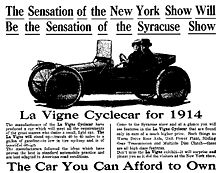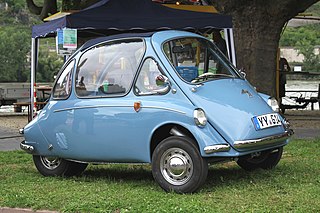
Microcar is a term often used for the smallest size of cars, with three or four wheels and often an engine smaller than 700 cc (43 cu in). Specific types of microcars include bubble cars, cycle cars, invacar, quadricycles and voiturettes. Microcars are often covered by separate regulations to normal cars, having relaxed requirements for registration and licensing.

The Alcyon was a French bicycle, automobile and motorcycle manufacturer between 1903 and 1954.

L'Aster, Aster, Ateliers de Construction Mecanique l'Aster, was a French manufacturer of automobiles and the leading supplier of engines to other manufacturers from the late 1890s until circa 1910/12. Although primarily known as an engine mass manufacturer the company also produced chassis for coach-works and a complete range of components.

Bédélia was the archetype of the French cyclecars.
The term light car is used in Great Britain since the early part of the 20th century for an automobile less than 1.5 litres engine capacity. In modern car classification this term would be roughly equivalent to a subcompact car. There are numerous light car clubs in Britain and Australia.
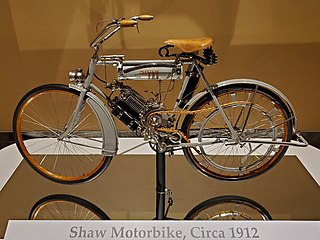
The Shawmobile or Shaw Speedster was a small two-seat cyclecar or buckboard-type vehicle built by the Shaw Manufacturing Company in Galesburg, Kansas from 1920 to 1930

The Staver and Staver-Chicago was an American Brass Era automobile manufactured at 76th and Wallace Streets in Chicago, Illinois, by the Staver Carriage Company from 1906 until 1914.

Blériot Aéronautique was a French aircraft manufacturer founded by Louis Blériot. It also made a few motorcycles between 1921 and 1922 and cyclecars during the 1920s.

The Blériot-Whippet was a British 4 wheeled cyclecar made from 1920 to 1927 by the Air Navigation and Engineering Company based in Addlestone, Surrey.

The Red Bug, later marketed as the Auto Red Bug were a vintage era cyclecar automobile manufactured by the Automotive Electric Service Corp. of North Bergen, New Jersey from 1924 to 1930. It is considered an early version of a microcar.
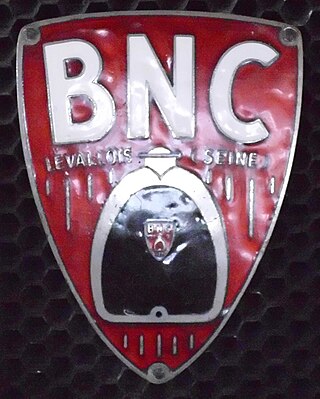
Bollack, Netter, et Cie(French: Bollack Netter et compagnie), more commonly known as B.N.C., was a small French automobile company in Levallois-Perret, situated on Avenue de Paris 39.

Gustave Adolphe Clément, from 1909 Clément-Bayard, was a French entrepreneur. An orphan who became a blacksmith and a Compagnon du Tour de France, he went on to race and manufacture bicycles, pneumatic tyres, motorcycles, automobiles, aeroplanes and airships.

Della Ferrera was an Italian motorcycle manufacturer active from 1909 to 1948. Four-valve motorcycles built by the company won events in the Trofeo Turistico Nazionale, at Cremona, and elsewhere. The company built a prototype for a cyclecar in 1924. The only model was a Cyclecar and was only produced in 1924. A four-cylinder two-stroke engine with a displacement of 707 cm³ provided the drive. The vehicle featured a four-speed gearbox and four-wheel brakes. The design-related top speed was given as 80 km/h. The Officine Meccanica Giuseppe Meldi took over the model in 1927 as the basis for its own vehicles.
France was a pioneer in the automotive industry and is the 11th-largest automobile manufacturer in the world by 2015 unit production and the third-largest in Europe. It had consistently been the 4th-largest from the end of World War II up to 2000. It is 16 % of sales of French manufactured products.
This is a chronological index for the start year for motor vehicle brands. For manufacturers that went on to produce many models, it represents the start date of the whole brand; for the others, it usually represents the date of appearance of the main model that was produced.
Chapuis-Dornier was a French manufacturer of proprietary engines for automobiles from 1904 to 1928 in Puteaux near Paris. Between 1919 and 1921 it displayed a prototype automobile, but it was never volume produced.

Automobiles Darracq France was a manufacturer of motor vehicles and aero engines in Suresnes, near Paris. The enterprise, known at first as A Darracq et Cie, was founded in 1896 by successful businessman Alexandre Darracq.
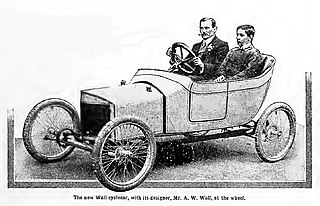
Arthur William Wall was an engineer in the field of motorised transport and inventor of the self-powered wheel in England in the early 20th century. He is best known for his creation of the self-powered wheel, the Wall Autowheel, which could be used to power a bicycle, but he was also the man behind Roc motorcycles and a tricar and four-wheel cyclecar. His main company was A.W. Wall Ltd, but he created several other companies to compartmentalise his different activities, such as the Roc Gear Co, who supplied epicyclic gears to a significant number of manufacturers before WW1.



